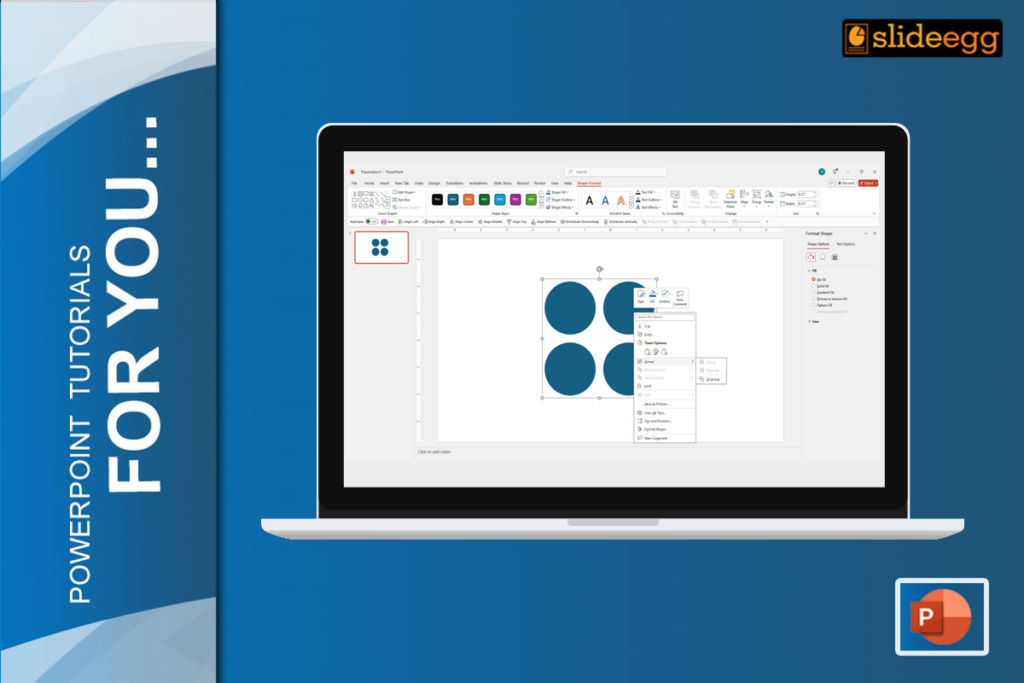It is exciting to build a PowerPoint presentation, but it does indeed become a headache after you have finished it. Its file size will cause all sorts of problems while sharing or uploading your presentation. So, mastering how to reduce the size of a PowerPoint presentation is necessary.
In this blog, we shall help you achieve the objective of making that PowerPoint file shrink without compromising the quality of your work. So let’s get started!
Why Compact a PowerPoint Presentation?
A heavy PowerPoint file can be problematic in many ways:
- Slow loading times
- Issues while emailing (due to size limits)
- Problems when uploading to the cloud or sharing platforms
- Reduced device storage space
Simple Ways to Minimize the File Size
1. Compress Images in Your Presentation
Pictures usually take the most space within a PowerPoint file. Compressing them will significantly reduce the size without degrading the quality of your presentation.
Here’s how to do it:
- Open any picture within your presentation.
- Click on the Picture Format tab.
- Select Compress Images.
- Select the resolution you need. For virtually all presentations that will be displayed on screens, 150 ppi (pixels per inch) is sufficient.
- Clear the check box for “Apply only to this image” if compressing all images at the same time.
This nice little trick reduces the file size and is probably one of the easiest steps you can take in preparing your presentation for delivery.
2. Use Standard Fonts
There are custom, or non-standard, fonts. These can be cool, but they do make files larger. If the presentation uses unusual fonts, PowerPoint has to embed those in the file so that others can open the presentation and see it right.
Avoiding This:
- Try to use standard fonts like Arial, Calibri, or Times New Roman.
- If you used custom fonts, then in File > Options > Save uncheck the “Embed fonts in the file” option.
This is a minor adjustment that will reduce the file size and readers will open the presentation just fine.
3. Convert Images to a Lower-Quality Format
If you are using images in PNG formats, then compress them to JPEG, as these will take relatively smaller spaces especially if the images don’t really need a transparent background.
You can do this by:
- Opening the image in your graphic editing tool like Paint or Photoshop.
- Save the image in JPEG.
- Replace the original high-size original in PowerPoint.
4. Remove All Unwanted Animations and Transitions
Animations and transitions give your presentation a really sleek look but significantly increase its file size. Reduce your use or completely remove them when they are not that important to you.
To remove animations:
- Select an animated slide.
- From the “Animations” tab click “None”.
You will also be able to keep your presentation size small if you ensure it’s clean and simple. To make your presentation stand out, you can use premade professional PowerPoint templates that are already set up with optimal size and design considerations in mind.
5. Embed Videos Wisely
It can add massive amounts of file size to your presentation. Embedding a lower-resolution video or, better yet, linking to a higher-resolution one online is a great alternative.
To embed a movie through compression with PowerPoint, follow these steps:
- Go to File > Info
- Under Media Size and Performance, click Compress Media.
- Under Compress Media click on the suitable choice for compression level.
This keeps the file size minimal while yet offering rich media content.
6. Save as a PowerPoint Show (PPSX)
After everything is done on your presentation, saving it as PowerPoint Show (PPSX) might reduce the file size as well. This format is usually lighter than a standard PPTX file and opens directly into slideshow mode when shared.
- Simply go to File > Save As and select PowerPoint Show (.ppsx) from the list of file type options.
7. Delete Unused Master Slides
If you experimented with using several different templates or designs during your creation process, then you find some unused slide layouts in the Slide Master. These are just throwing away extra space, so you should go ahead and delete them.
- Open View > Slide Master and delete all the layouts you are not going to use.
8. Save Compressed
Saving in a compressed format is the last, but easiest, way to reduce file size. PowerPoint actually does this automatically for you:
- Just go to File > Save As.
- Choose Tools > Compress Pictures, and select a lower resolution.
- Alternatively, you can save it as a PDF, if you do not need it to be editable.
This helps reduce the size with which you are sharing it quickly on email or upload, for example.
More Presentation Tips & Tricks
Reducing their size may also serve as one of the techniques for perfecting your PowerPoint slides. For other presentation hacks, like changing your page orientation from landscape to portrait, feel free to check our other blogs for in-depth knowledge. Your presentations will be efficient, professional, and engaging.
Conclusion
Now that you know how to minimize the size of your PowerPoint presentation, it’s time to focus on what really matters – having an impactful presentation! Remember, sometimes these small adjustments make a big difference. Compression of images and use of proper fonts-these methods can be used to optimize your slides.
Not to forget, saving time and effort can sometimes be achieved when using a premade PowerPoint template. These templates are designed to be beautiful as well as file-size friendly to enhance your presentation and make it efficient.







